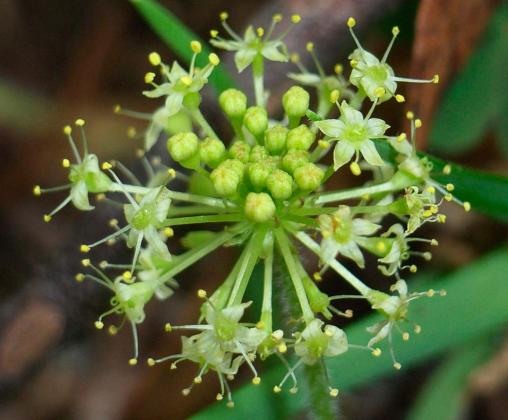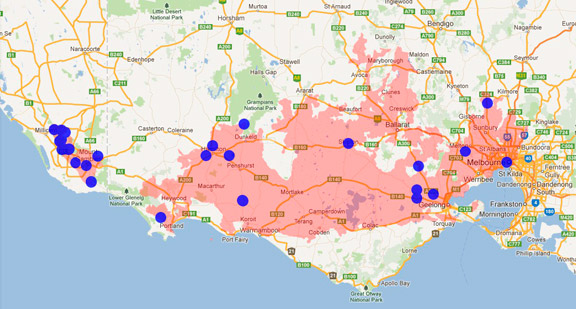A range of teacher professional learning programs will be developed to accompany the Biodiversity of the Western Volcanic Plains online outreach...


Stinking Pennywort
Hydrocotyle laxiflora
Perennial. Grows as loose mats, forming roots at leaf nodes. Tolerates a wide range of conditions. Colonises disturbed areas.
| Details | Description |
| Type | Herb |
| Group | Parsley |
| Identifying Characteristics | |
| Distinctive Features | Leaves held upright and edged with five or more scallop-like lobes. |
| Life Form Group | Herb |
| Life Form Codes | Small or Prostrate Herb (SH) |
| EVC types | EVC 55_61: Plains Grassy Woodland EVC 55_63: Higher Rainfall Plains Grassy Woodland EVC 649: Stony Knoll Shrubland |
| Native Status | Native to Australia |
| Taxonomy | |
| Phylum | Charophyta |
| Class | Equisetopsida |
| Order | Apiales |
| Family | Araliaceae |
| Genus | Hydrocotyle |
| Species | laxiflora |

Distribution maps indicate current and historic locations where species have been sighted.
Source: Atlas of Living Australia
| Endangered Status | |
| DEPI Advisory List | Not listed |
| FFG Act | Not listed |
| EPBC Act | Not listed |
The conservation status of species is listed within Victoria and Australia.
The Department of Environment and Primary Industry (DEPI) Advisory List consists of non-statutory advisory lists of rare or threatened flora and fauna within Victoria.
The Flora and Fauna Guarantee Act 1988 (FFG Act) lists threatened species in Victoria. Under the Act, an Action Statement is produced for each listed species.
The Environment Protection and Biodiversity Conservation Act 1999 (EPBC Act) is the Australian Government’s key piece of environmental legislation, listing nationally threatened native species and ecological communities.



